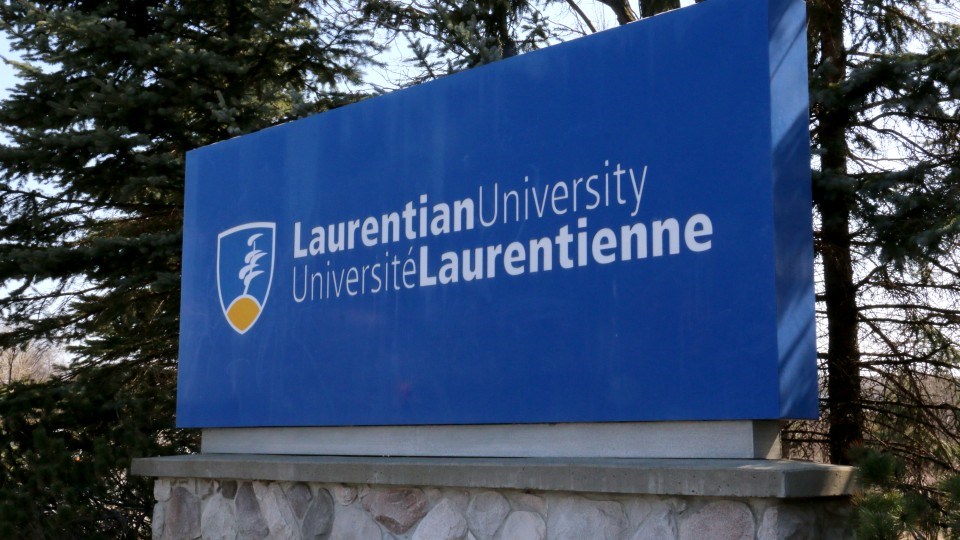The courts have granted Laurentian University permission to extend its insolvency restructuring efforts into the new year.
Laurentian asked that the stay of proceedings protecting it against its creditors be extended until Jan. 31, 2022, and that the maturity date for its bridge financing loans also be extended to the same date.
In granting the motion presented by Laurentian in the brief court hearing on Friday, Chief Justice Geoffrey Morawetz said Laurentian has demonstrated significant progress in its restructuring efforts amid a difficult situation.
“Obviously there’s been challenges from the beginning, and the impact upon all parties has not all been positive, but that is the nature of the situation that was presented,” he said.
The university announced Feb. 1 it is insolvent, and had filed for creditor protection under the Companies Creditors’ Arrangement Act (CCAA), a move that’s unprecedented in the post-secondary sector.
It said it would have run out of cash to meet its payroll obligations if it hadn’t secured the bridge loan, known as a debtor-in-possession (DIP) loan, through the insolvency process. Laurentian now owes more than $35 million to its DIP lender.
With today’s approval of the loan maturity date extension to Jan. 31, a one-per-cent fee of $350,000 was tacked onto the DIP loan.
Laurentian’s restructuring has included massive program and staff cuts, as well as the termination of ties with the federated universities operating on campus.
The most recent court documents say these changes “within the CCAA proceeding to date has resulted in cost savings for LU of approximately $40 million/year, representing a reduction of 25 per cent to its annual expenses.”
Laurentian is also doing a review of its real estate to see if it can be monetized (which has resulted in a community campaign against its greenspace possibly being sold off).
It will also engage in a review of its governance and operational practices to ensure its future success after restructuring.
The university is still in the process of dealing with its creditors, which includes an estimated 1,200 past and present staff members, including employees who were terminated through restructuring and have yet to receive any severance pay.
Over the fall months, it will develop a “plan of arrangement” for its creditors, which will include negotiations for payouts.
DJ Miller, the lawyer representing Laurentian in its insolvency restructuring, said the university originally hoped to complete the CCAA process by the end of 2021 “so that as we started the new year, it was new year, fresh start.”
However, she said a number of factors played into Laurentian’s request to extend its insolvency restructuring into 2022, not least of which is the pandemic.
COVID-19 not only obviously makes running a university more challenging, it makes meetings surrounding the CCAA process all the more difficult to co-ordinate, Miller said.
In the wake of its insolvency, Laurentian is also facing a number of other investigations, including a value-for-money audit by the Ontario auditor general, and an Ontario ombudsman investigation into LU’s offerings under the French Language Services Act.
All of these demands are being placed on Laurentian’s admin staff, which was a “lean group to begin with,” she said.
“A lot of parties have a lot of very legitimate demands on the resources of the university,” Miller said, adding that “it’s not anyone taking their foot off the gas, it’s just recognizing that there have been some tremendous challenges for the university.”
In terms of Laurentian’s cash flow situation, Miller says Laurentian will have enough funds between the DIP loans and tuition money to cover its costs until the end of January.
“It’s important to note, when we’re looking at the cash position that the point in time we’re at right now is the highest cash position for the university” as it’s when the bulk of tuition is received for the year, she said.
In terms of enrolment numbers for the fall, Miller said it’s still too early to confirm those numbers. “We expect that will be more clear in the next few weeks,” she said.
However, Laurentian president Robert Haché said in a recent affidavit filed before the courts that based on information available to LU at this time, the decline in new student enrolment numbers appears to be consistent with projections (a roughly 30-per-cent decline).
During Friday’s hearing, the court heard from Andrew Hatnay, the lawyer representing Thorneloe University, one of the three federated universities operating on Laurentian’s campus.
Laurentian severed ties with Thorneloe, as well as Huntington University and the University of Sudbury in the spring, as it sought to keep tuition and government money it transferred to these institutions in exchange for offering courses counting toward LU degrees.
Hatnay said as a result of Laurentian’s decision to sever ties with the federated universities, Thorneloe is now in the process of “winding down” its operations.
It has gone from 2,400 students to just 36 — the remaining students are studying theology courses offered under Thorneloe’s own educational charter.
It has also gone from 28 faculty and staff to a skeleton crew of four, and is in the process of paying out severance to its staff from a static pool of funds.
Laurentian also owes funds to federated university employees who were enrolled in the university’s retiree benefits plan (RHBP).
However, Huntington and Thorneloe universities have objected to Laurentian’s RHBP compensation methodology plan, as they say employees with these institutions will end up with less money than their Laurentian counterparts.
The parties are still negotiating on this point, and a Sept. 31 deadline has been set. Miller said during the Friday court date she’s hopeful a resolution can be reached.
– Sudbury.com




